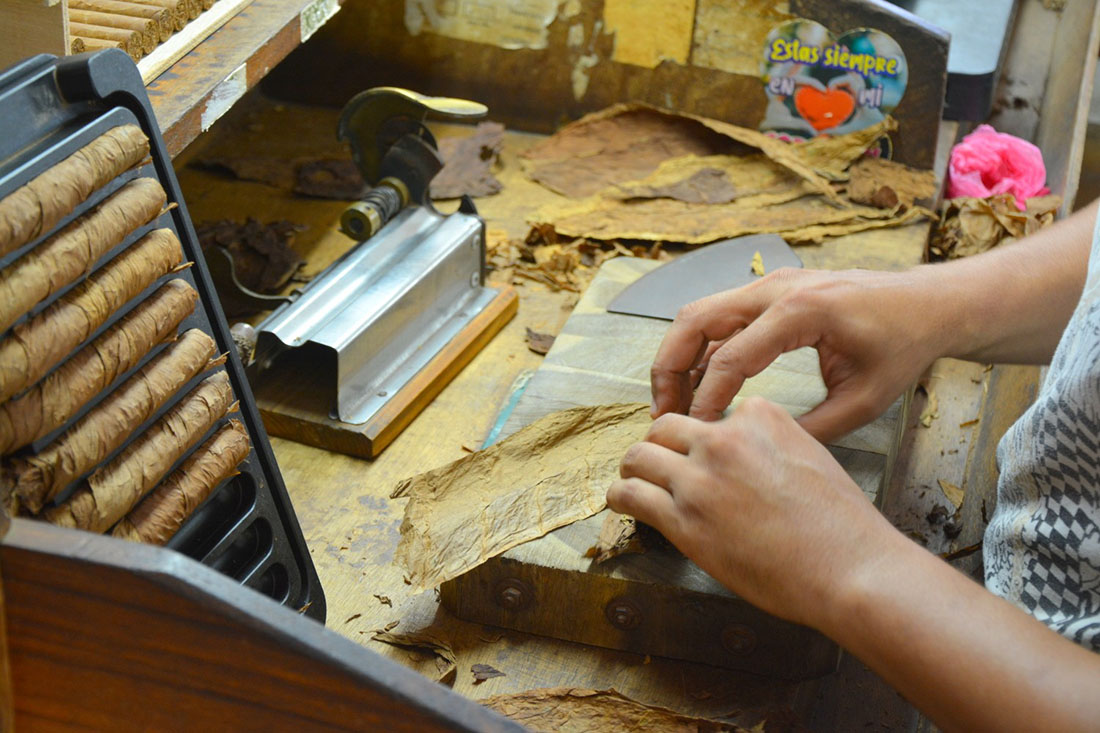Where San Ramón street begins, encrypted with 323 and just to the right, is the former Guarina cigar factory, which became El Surco tobacco factory in 1960. To check that the transformation of the property dignified its workers, the then Minister of Industry, Ernesto Guevara, came in person to visit them.
A plaque on one of its side walls attests to this. To find out details of that historic visit by Che to that unique guild, we go back in time with Carmen Rita Rodríguez Pérez, a tobacco shop reader for 58 years.
Carmita
From the age of 14, she began working with her mother in a “chinchal” located in La Mosca district, that is what they called the small private businesses that produced tobacco before 1959.
With the revolutionary triumph, the union leaders of the tobacco union in Camagüey went to meet with Lázaro Peña, because they wanted to meet in a single room to have a chat, like the great family they have been since the times of José Martí.
So, they were given the premises that their factory now occupies, the first in the city after the revolutionary triumph. Several generations of workers have passed through its premises, where the most experienced are teachers of the youngest and many are sons of former cigar rollers.
Within the process there are other specialties that also guarantee the final quality of each brand or vitola. Carmita, as her classmates call her, has gone through several tasks, but the definitive one was that of reader; she responding to a proposal from those who already comb gray hair, in the art of transforming the aromatic leaf into the liked Cuban tobacco, with the board and the key.
Che’s visit
That historic visit by the guerrilla, accompanied by the union leader Lázaro Peña, was etched in the memory of the workers of El Surco, who proudly treasure the story of those who lived through that experience and share it with the new generations.
They say that they arrived in a jeep, with their olive-green boots and suits, they entered through one of the front doors of the building, which today is a window. Already in the gallery or living room, Che spoke to the workers.
They saw him very interested in the working conditions of the new center, for the payment, the fairness of the norm; and very attentive to each opinion of the workers. He verified the quality of the product by being presented with one of those cigars, which he tasted during his tour.
How do you see it over time?
When asked how Carmita sees the presence of El Che and his legacy in the guild, she takes a few seconds to answer and assures that… She sees him as immortal.
She feels it alive in each young person who joins the tobacco family, struggling with blackouts and shortages of resources, to guarantee that exportable item in the 7 brands that they make today.
I could feel her words as I toured the facility and saw Teresa, his daughter who is a conditioner of the leaves, Nelsa who is a destemmer and loves her work, Dayana and Dixa ringing the figs with great delicacy, the young Yayo, who glues and carefully covers the wooden boxes and finally taster Jorge Luis, enjoying a Duque vitola; all with such enthusiasm, that I have no doubts about his commitment to quality and production.
Then we return to the plaque, which since 1961 reminds us that Che visited the cigar makers in Camagüey, to leave his message of hope and here, with her hand on the bronze plaque, Carmita returns to declare herself as his eternal admirer.
Translated by: Aileen Álvarez García






